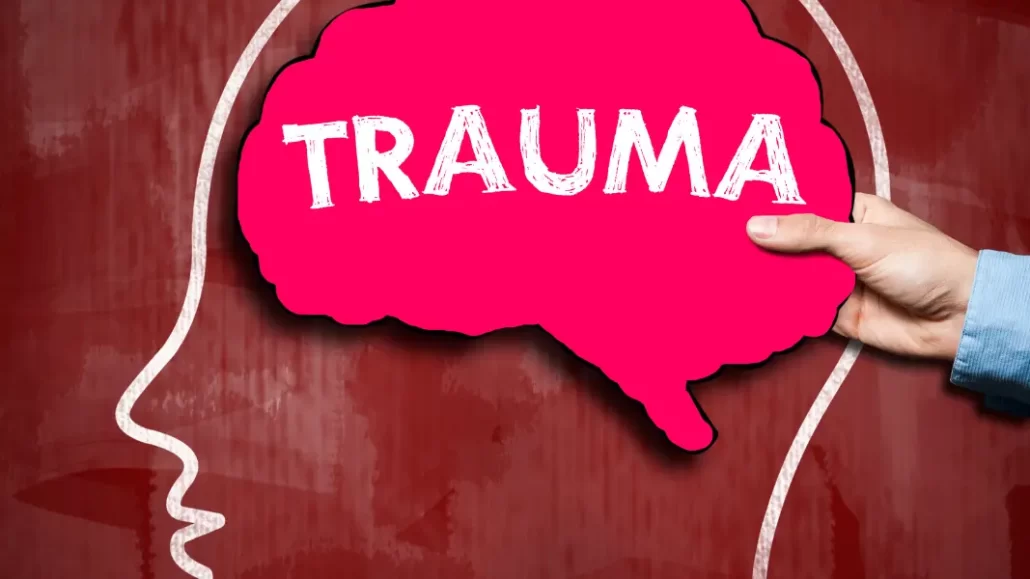“Trauma is not what happens to you; trauma is what happens inside you as a result of what happens to you ” – Dr. Gabor Mate
Dr. Gabor Mate’s words provide an accurate description of trauma and how to understand it. Trauma, in a nutshell, is our body’s and mind’s response to a stressful event or situation. But, what counts as trauma? What are some events or situations that may lead to a traumatic response? And, what does that response look like? It is important to note that a person can experience trauma without the presence of physical danger or threats.
What Counts as Trauma?
According to the American Psychological Association, trauma is an emotional and physiological response to any event that is deemed stressful, threatening, or harmful. Often, people associate trauma with war veterans or victims of sexual assault. While many veterans and victims of assault receive a Post Traumatic Stress Disorder (PTSD) diagnosis, these are not the only forms of trauma. There are four general categories to formally define a traumatic event. Knowing these categories can help clarify the nature of traumatic experiences and their impact on our bodies.
Read more about defining trauma here.
Acute Trauma
These are one-time events that cause immediate and intense distress. Some examples of these include, but are not limited to, a sudden death of a loved one, a car accident, physical or sexual assault, and natural disasters.
Chronic Trauma
These are prolonged or repeated traumatic events. Some examples include, but are not limited to domestic abuse, war, community violence, illness, neglect, poverty, systemic discrimination and racism, and homelessness.
Complex Trauma
This is the result of repeated and/or prolonged exposure to traumatic events and within specific relationships and contexts. Ultimately, this exposure can lead to significant changes in world view and sense of self. Some of these events include, but are not limited to, childhood abuse, human trafficking, community violence, and racial trauma.
Secondary/Vicarious Trauma
This is the result of the repeated and/or prolonged exposure to the suffering and trauma of others. This can include personal and/or professional relationships. One example is a family member who witnesses the trauma of a child, parent, other family member, or friend. Some examples of professionals who can experience this type of trauma include those in law enforcement, firefighters, healthcare providers, and people in social services.
“Big T” and “small t” Trauma
We can use two categories when informally defining trauma: “Big T” trauma and “small or little t” trauma. This is not to say that the experience of “small t” trauma is less than “Big T” trauma. “Big T” trauma is caused by a major, catastrophic event. “Big T” traumas are those associated with acute trauma. “Small t” traumas are associated with chronic, complex, and secondary or vicarious trauma.
The impact of a traumatic event, no matter which category it is in, could range from immediate and noticeable effects on a person’s well-being and functioning to more subtle and long term changes in a person’s behaviors and interpersonal relationships. What counts as emotional or psychological trauma really depends on what happens inside the person, which we will now explore.
Trauma Response
What does it mean to be “traumatized”? Experiencing a traumatic event has adverse effects on the mind and the body. When we face a “Big T” or “small t” trauma, our bodies trigger physiological responses to adapt to the danger. Our survival mechanisms kick in. As a result, our fight, flight, or freeze response gets activated. Sometimes we get stuck in the fight, flight, or freeze response even when not consciously thinking about the event after it is over.
When we are children and are more vulnerable, “Big T” or “small t” traumas can evoke emotions that are challenging to manage. Often, the emotional pain is so unbearable that our young minds and bodies don’t know how to deal with that pain. So we create protective defenses in order to shield ourselves from the pain. For example, a child may learn to dissociate from their abuse. This can be a way to shield themselves from the emotional overload of the trauma. Then, they carry those protective defenses into adulthood, even if they don’t need them anymore. They become wired into our brains, which is always on alert in case the danger of the past returns.
Read more about trauma triggers.
Healing Trauma
The good news is that trauma can be healed in a compassionate and safe space. We can always rewire our brains from past programming, especially with the help and support of therapy. Ultimately, healing from trauma involves creating a safe and compassionate space to reconnect to our bodies and emotions through awareness and curiosity. Additionally, we want to let the body and mind feel that it is safe when we are safe.
Finding a therapist that you can connect with is a helpful way to heal from trauma. There are some therapeutic modalities that have shown to be very helpful in supporting the healing of trauma:
- Eye Movement Desensitization and Reprocessing (EMDR)
- Experiential Psychotherapy
- Internal Family Systems Therapy (IFS)
- Somatic therapy
As Dr. Gabor Mate said, “trauma is what happens inside of you as a result of what happens to you.” As we’ve explored, our brains and bodies respond to what happens to us in ways we cannot control. This response can have both noticeable and subtle effects on our lives. However, if we are left traumatized from a traumatic event, there is hope that we can heal from it.
Are you interested in exploring and healing from your trauma? Reach out to myTherapyNYC to find out which of our therapists would be a good fit for you!
What therapeutic modalities have helped you with trauma? Join the conversation in the comments below!
- Embracing Sex Without Shame - March 7, 2024
- What Counts as Trauma? - July 13, 2023
- What is Codependency? - March 9, 2023






2 comments
I appreciate the description of the four types of trauma and the emphasis that trauma is not the event but how the event impacts us — this is so important — but I think the characterization of Big T and Small T traumas is highly problematic. The fact that you need to first point out that one is not lesser than the other reflects the way most people are conditioned to immediately hear and “rank” this distinction, and I think upholding the distinction, even while trying to characterize it differently, is not enough to effect a shift in perspective. I also don’t think it’s true that Big T is generally understood as acute trauma and the other types as Small, although this might be a growing understanding among some professionals. You also describe the effects of both as essentially the same — so what makes the distinction meaningful? The word trauma itself has gravity, magnitude and potency. I think a more useful approach would be to keep the good information you have on precipitating events and subsequent effects and leave the “ranking” out of it entirely. Respectfully, Karen S.
Thank you … This makes understanding the complexities easier: very clarifying.